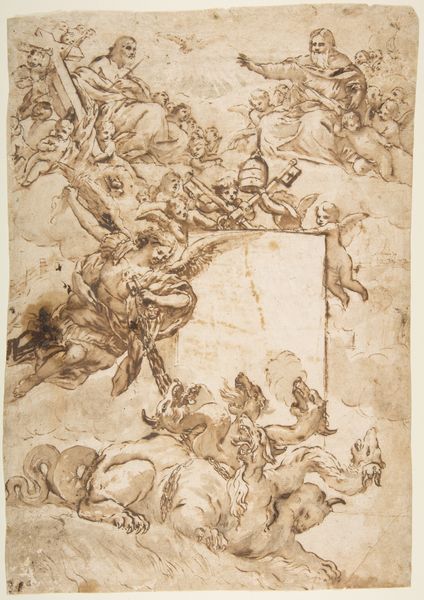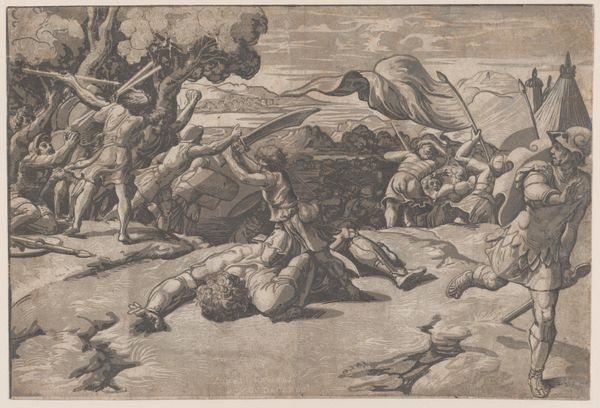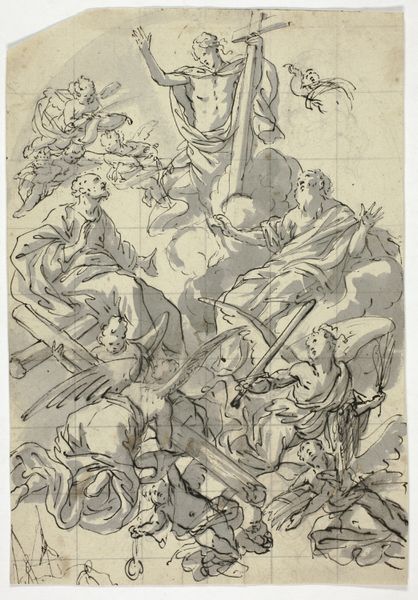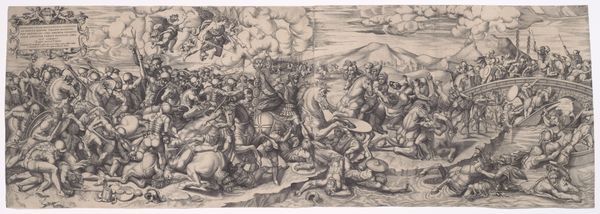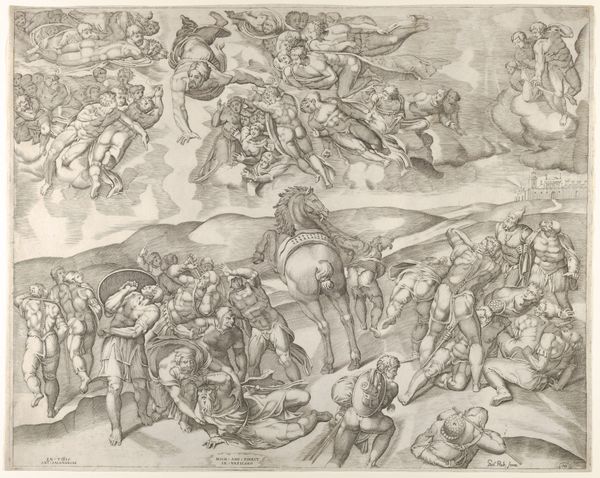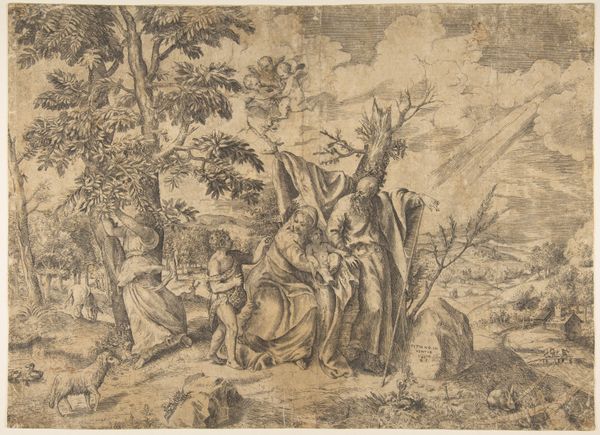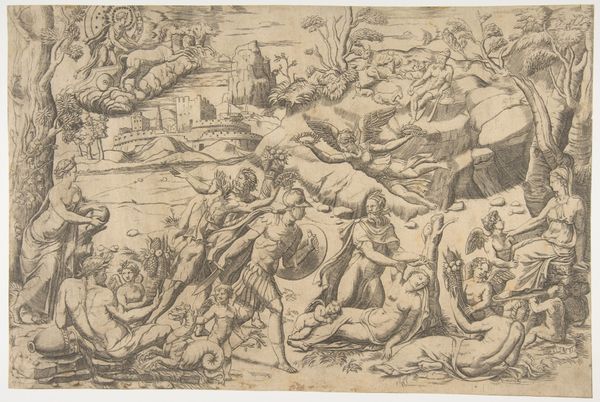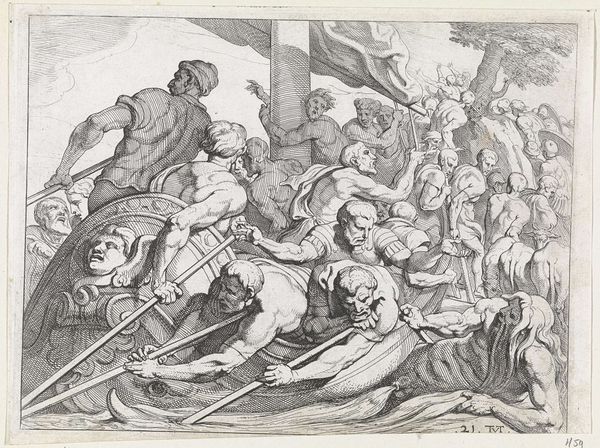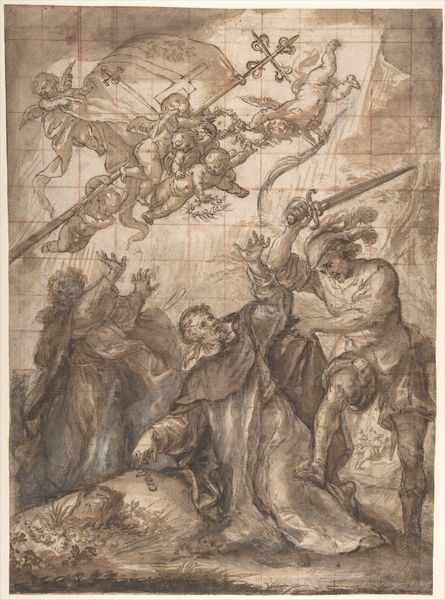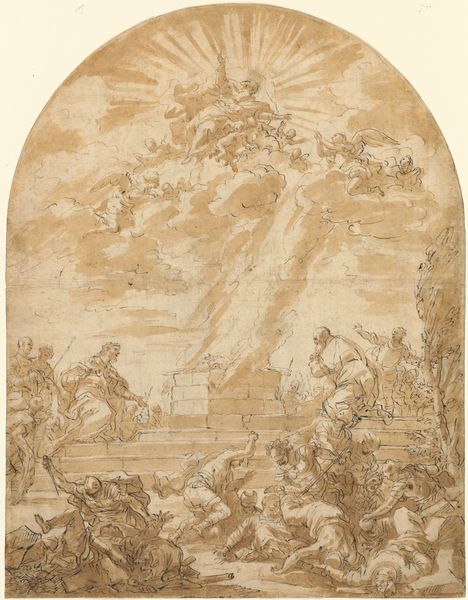
print, intaglio, engraving
#
ink drawing
# print
#
intaglio
#
mannerism
#
figuration
#
11_renaissance
#
history-painting
#
italian-renaissance
#
engraving
Dimensions: 215 mm (height) x 375 mm (width) (bladmaal)
Curator: Ugo da Carpi created this print of "David halshugger Goliat" sometime between 1510 and 1530. This intaglio engraving really captures a dramatic moment. What’s your first impression? Editor: Violent! The eye is immediately drawn to David as he raises his sword. It is easy to see Goliat laid out beneath him and to grasp what just happened in the moment, blood lust mixed with national pride in the crowd that is amassed in the background. Curator: Absolutely. Da Carpi worked during the Italian Renaissance and adopted a Mannerist style here, which can be observed in the elongated figures and dramatic composition to heighten the emotional impact. Prints like these served a crucial function; circulating stories and artistic styles beyond the elite. It becomes a shared cultural artifact, disseminating not only religious narratives but also specific visual languages linked to power and authority. Editor: It's fascinating how the act of reproduction through engraving democratizes access but also solidifies the dominance of certain interpretations of historical or religious events. Who gets to control the narrative becomes key here. Also, consider the socio-political backdrop—the relationship between religious dogma, art production, and its audiences—very interesting when assessing how those things translate to a present day context. Curator: Right. We see how an artist like da Carpi interpreted a familiar biblical story. How his choices about which moment to depict, which figures to emphasize, and what style to adopt can create very specific social and political messaging for its intended audience. Editor: The way David's victory is highlighted reinforces existing hierarchies, painting the heroic vanquisher as sanctioned by a higher power. I'd push further into an understanding about what those representations actually produce on society at the time, and potentially today. What kind of permission structures and violence is it licensing and or encouraging? Curator: I agree, considering how these prints played a role in constructing and reinforcing ideas about leadership, heroism, and the ‘other’ helps to reveal more about their societal function during the Renaissance. Editor: Absolutely, moving past simply celebrating da Carpi’s technique, although impressive, enables the possibility for viewers to recognize themselves reflected, both presently and historically, in this work and opens possibilities for broader critical conversations. Curator: Indeed. Understanding this allows a new appreciation for the impact these prints once had and the narratives they carried within them. Editor: Yes, and prompts us to critically assess the systems and the frameworks within our own contemporary visual culture, urging us to inquire about who holds the proverbial sword today and whose stories remain unseen.
Comments
No comments
Be the first to comment and join the conversation on the ultimate creative platform.

